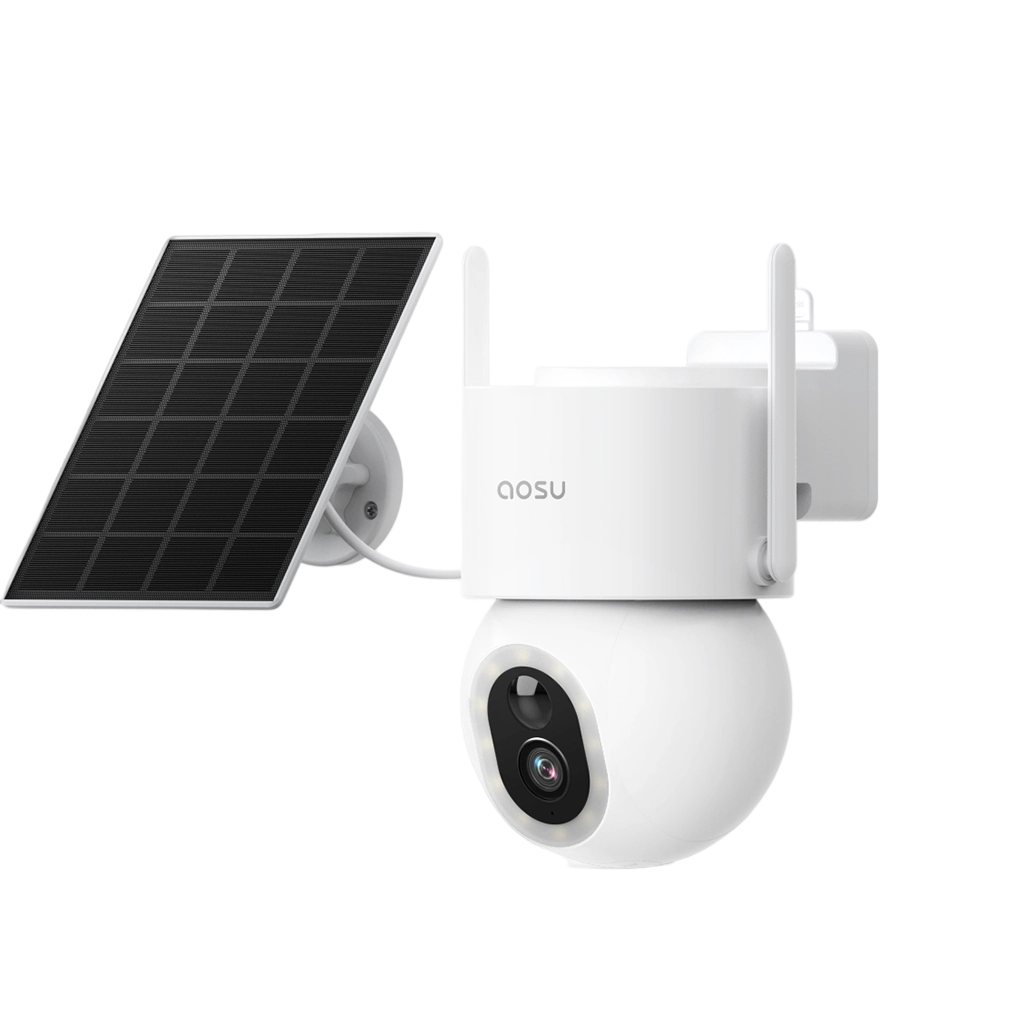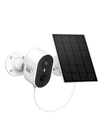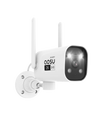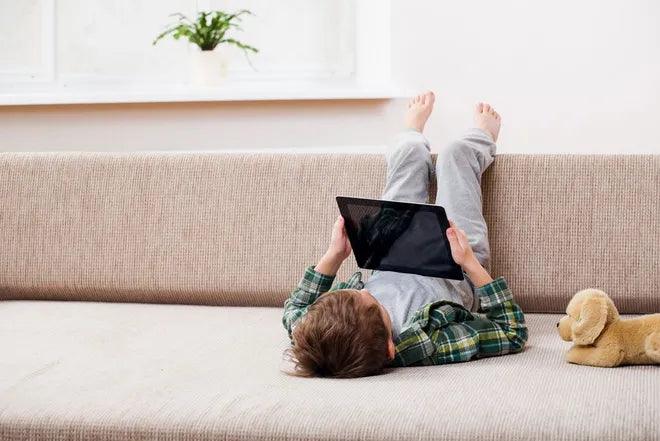Leaving a puppy alone at home for the first time can be a nerve-wracking experience for both you and your furry friend. Puppies are full of energy and curiosity, and the thought of them feeling anxious or getting into trouble while you're away can be quite stressful. But don't worry! With the right preparation and a few handy tricks, you can ensure that your puppy feels safe, comfortable, and even entertained when left alone. In this guide, we'll walk you through everything you need to know to make the transition smooth and stress-free, including how indoor security cameras can play a crucial role in monitoring your puppy remotely.
Understanding Your Puppy's Needs
Puppies are like toddlers — they require a lot of attention, care, and supervision. Understanding your puppy's emotional and physical needs is the first step in preparing them for alone time. Puppies thrive on routine and can feel anxious when their environment changes suddenly. They might experience separation anxiety, leading to behaviors like whining, barking, or chewing on furniture. Recognizing these needs and preparing accordingly will help in easing their anxiety.
How to Prepare Your Puppy for Alone Time
Leaving your puppy alone for the first time doesn't have to be a stressful experience. With the right preparation, you can ensure your puppy feels safe and secure in your absence. Let's explore some effective strategies to get your puppy accustomed to being alone.
1. Gradual Desensitization Techniques
Start by leaving your puppy alone for short periods and gradually increase the duration. This technique, known as desensitization, helps your puppy get used to being alone without feeling abandoned. Begin with just a few minutes and slowly work your way up to an hour or more.
2. Creating a Comfortable and Safe Environment
Ensure your puppy has a designated area where they feel safe. This could be a crate or a specific room with their bed, toys, and water. A familiar environment can significantly reduce anxiety.
3. Importance of Exercise and Playtime Before Leaving
Tire your puppy out with a good session of exercise and playtime before you leave. A tired puppy is more likely to rest and less likely to engage in destructive behaviors.

Essential Supplies and Setup
Having the right supplies and a well-prepared environment is crucial for your puppy's comfort and safety. From cozy beds to engaging toys, we'll guide you through setting up a space that keeps your puppy content while you're away.
List of Supplies
-
Crate or playpen
-
Comfortable bed
-
Chew toys and puzzle toys
-
Water bowl
-
Puppy pads (if needed)
How to Set Up a Designated Puppy Area
Choose a safe, puppy-proofed area of your home. Place the crate or bed in this area, along with toys and water. Make sure there are no hazardous items within reach. Remove any items that could be harmful to your puppy, such as electrical cords, small objects they could swallow, and toxic plants. Ensure the area is secure, with no escape routes.
How to Train Your Dog Before Leaving it Alone at Home
Training is key to helping your puppy feel at ease when left alone. By using positive reinforcement and crate training, you can create a positive experience for your furry friend. Let's delve into the best training techniques to set your puppy up for success.
1. Crate Training Basics
Crate training can be incredibly helpful for both you and your puppy. Start by making the crate a positive space with treats and toys. Gradually increase the time your puppy spends in the crate while you're at home, so they associate it with safety and comfort.
2. Positive Reinforcement Strategies
Use positive reinforcement to encourage good behavior. Reward your puppy with treats, praise, and playtime when they exhibit calm and positive behavior while alone.
3. Using Treats and Toys to Encourage Positive Behavior
Interactive toys and treats can keep your puppy occupied and reduce boredom. Puzzle toys that dispense treats are particularly effective in keeping your puppy engaged.

Monitoring Your Puppy Remotely with Indoor Security Cameras
Technology can be a lifesaver when it comes to keeping an eye on your puppy while you're out. Indoor security cameras offer peace of mind and allow you to check in on your pet anytime, ensuring they're safe, comfortable, and not getting into mischief. Let’s delve into the benefits of using indoor security cameras and how they can help you and your puppy.
Introduction to aosu Indoor Security Cameras
Indoor security cameras of aosu are designed to monitor your home and provide live video feeds to your mobile devices. They come equipped with various features that make them perfect for keeping tabs on your puppy while you're out. Whether you're at work, running errands, or simply in another part of the house, a security camera can give you a window into your puppy’s world.
Benefits of Using aosu Indoor Cameras to Check on Your Puppy
-
Real-Time Monitoring: One of the most significant benefits is the ability to see what your puppy is doing in real-time. This can help you catch any potential issues immediately, such as your puppy getting into something they shouldn’t or displaying signs of distress.
-
Peace of Mind: Knowing that you can check in on your puppy at any time provides immense peace of mind. You can focus on your tasks without constantly worrying about your puppy's well-being.
-
Behavioral Insights: Observing your puppy’s behavior when they think no one is watching can provide valuable insights. You can identify any signs of separation anxiety, boredom, or distress and address them promptly.
-
Interactive Features: aosu's indoor security cameras come with two-way audio, allowing you to talk to your puppy. Hearing your voice can be comforting for them and can help alleviate any anxiety they might feel.
-
Security Alerts: aosu indoor security cameras offer motion detection and can send alerts to your phone if your puppy is moving around more than usual. This feature can notify you if your puppy is particularly restless or if something unexpected happens.
-
Recorded Footage: Having recorded footage can be beneficial for reviewing your puppy’s behavior over time. It can also be helpful if you need to consult with a vet or a professional trainer about any concerning behaviors.
Features to Look for in a Good Indoor Security Camera
When choosing an indoor security camera for monitoring your puppy, consider the following features:
-
High-Resolution Video Quality: Clear video is essential for seeing what your puppy is up to. Look for cameras with at least 1080p resolution.
-
Two-Way Audio: Being able to talk to your puppy can be incredibly reassuring for them. This feature allows you to soothe them with your voice or give commands if necessary.
-
Wide-Angle Lens: A wide-angle lens ensures you can see more of the room and keep better track of your puppy’s activities.
-
Night Vision: If you might be away during the evening or night, night vision ensures you can still see your puppy clearly in low light conditions.
-
Mobile App Integration: Easy access via a mobile app makes it simple to check in on your puppy from anywhere. Look for user-friendly apps that offer reliable connectivity.
-
Motion Detection Alerts: Alerts that notify you of movement can help you stay on top of your puppy’s activity levels and address any issues as they arise.
-
Cloud Storage: Cloud storage options for recorded footage mean you can review past activity, which is useful for tracking behavior changes or sharing with a professional.
aosu’s products incorporate all these features, making them the perfect choice for keeping your puppy safe and monitored while you’re away.

How to Set Up Your Indoor Security Camera for Optimal Monitoring
-
Positioning the Camera: Place the camera in a location that provides a clear view of your puppy’s designated area. Make sure it covers their bed, toys, and any spots they like to frequent.
-
Testing the Audio: If your camera has two-way audio, test it to ensure your puppy can hear you clearly. Speak to them through the camera and observe their reaction.
-
Setting Up Alerts: Customize the motion detection settings to avoid unnecessary alerts. Adjust the sensitivity so you get notified for significant movements rather than every little twitch.
-
Regular Checks: Make it a habit to check in on your puppy periodically. This not only helps you monitor their current state but also reassures them with your virtual presence.
-
Reviewing Footage: Take time to review recorded footage, especially if you notice any changes in your puppy's behavior. This can help you identify patterns and address any issues promptly.
By integrating an aosu indoor security camera into your home, you can create a safer and more reassuring environment for your puppy. It's a practical tool that provides both peace of mind and valuable insights into your puppy's behavior, ensuring they are happy and healthy even when you're not around.
Wrapping Up
Leaving your puppy alone at home for the first time can be a challenging experience, but with these tips and tricks, you can ensure it's a positive one for both you and your furry friend. Utilizing tools like aosu’s indoor security cameras can provide additional peace of mind, making the process smoother and safer. Remember, every puppy is unique, so be flexible and adjust your approach as needed. Happy puppy parenting!








































Leave a comment
This site is protected by hCaptcha and the hCaptcha Privacy Policy and Terms of Service apply.